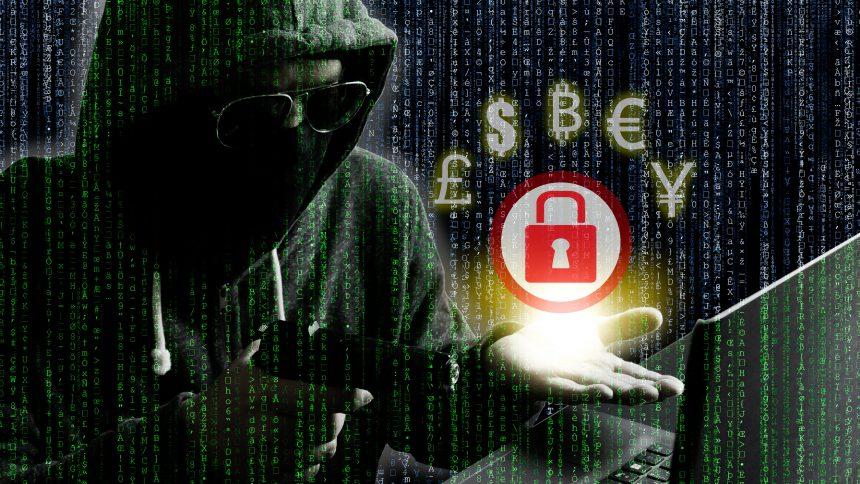The Watz File Virus, a notorious type of ransomware, has been causing significant distress to individuals and organizations alike. This cyber threat encrypts files on the infected system, making them inaccessible until a ransom is paid. Understanding the workings of this malware, its consequences, and effective removal methods are crucial for safeguarding your digital assets.
Actions and Consequences of the Watz File Virus
Once the Watz File Virus infiltrates a system, it begins its malicious activities almost immediately. Here’s a detailed look at its actions and consequences:
- Encryption of Files: The primary action of the Watz File Virus is to encrypt files on the victim’s computer. It uses a strong encryption algorithm, making the files inaccessible without the decryption key, which is typically held by the attackers.
- Ransom Note: After encryption, the malware generates a ransom note, usually in a text file, informing the victim of the encryption and demanding a ransom in cryptocurrency, often Bitcoin, in exchange for the decryption key.
- System Alterations: The virus may alter system settings and disable security features to avoid detection and removal. This includes modifying registry entries and disabling antivirus software.
- Data Loss and Downtime: Victims may suffer significant data loss if backups are not available. The downtime caused by the inability to access critical files can be detrimental, especially for businesses.
- Potential Data Breach: In some cases, ransomware attacks also involve data exfiltration, where sensitive information is stolen before encryption. This can lead to further exploitation or exposure of personal and corporate data.
The WATZ Ransom Note
ATTENTION!
Don’t worry, you can return all your files!
All your files like pictures, databases, documents and other important are encrypted with strongest encryption and unique key.
The only method of recovering files is to purchase decrypt tool and unique key for you.
This software will decrypt all your encrypted files.
What guarantees you have?
You can send one of your encrypted file from your PC and we decrypt it for free.
But we can decrypt only 1 file for free. File must not contain valuable information.
You can get and look video overview decrypt tool:
https://we.ti/t-vc50LyB2yb
Price of private key and decrypt software is $980.
Discount 50% available if you contact us first 72 hours, that’s price for you is $490.
Please note that you’ll never restore your data without payment.
Check your e-mail “Spam” or “Junk” folder if you don’t get answer more than 6 hours.
To get this software you need write on our e-mail:
support@freshmail.top
Reserve e-mail address to contact us:
datarestorehelp@airmail.cc
Your personal ID:
0722JOsie
Detection Names and Similar Threats
Different cybersecurity vendors may identify the Watz File Virus under various names. Some common detection names include:
- Trojan-Ransom.Win32.Watz
- Ransom.Watz
- FileCoder.Watz
Similar threats that operate in a comparable manner include:
- WannaCry: This infamous ransomware spread rapidly in 2017, causing widespread damage by exploiting a vulnerability in Windows.
- Petya: Another destructive ransomware that not only encrypts files but also overwrites the master boot record (MBR), making the entire system unusable.
- Cerber: Known for its sophisticated encryption techniques and persistent updates to evade detection.
Comprehensive Removal Guide
Removing the Watz File Virus requires a careful, step-by-step approach to ensure complete eradication and recovery of your files. Follow these steps meticulously:
Step 1: Isolate the Infected System
- Disconnect the infected computer from the network to prevent the ransomware from spreading.
- Turn off wireless communication such as Wi-Fi and Bluetooth.
Step 2: Boot into Safe Mode
- Restart your computer.
- During the boot process, press the F8 key repeatedly until the Advanced Boot Options menu appears.
- Select “Safe Mode with Networking” and press Enter.
Step 3: Restore System Settings (if applicable)
- If you have a system restore point, use it to revert your computer to a previous state before the infection.
- Open the Start Menu, type “System Restore” and press Enter.
- Follow the on-screen instructions to restore your system.
Step 4: Remove Suspicious Programs
- Go to Control Panel > Programs > Programs and Features.
- Look for recently installed suspicious applications and uninstall them.
Step 5: Delete Temporary Files
- Open the Run dialog by pressing Windows + R.
- Type “temp” and press Enter. Delete all files in the folder.
- Repeat the process with “%temp%” and “prefetch”.
Step 6: Use Built-in Security Tools
- Run Windows Defender or your built-in antivirus program for a full system scan.
- Follow the prompts to remove any detected threats.
Step 7: Check and Clean Browser Settings
- Open your browser and check for any unfamiliar extensions or add-ons. Remove them.
- Reset your browser settings to default.
Step 8: Restore Encrypted Files
- If you have backups, restore your files from them.
- Use shadow copies (if available). Right-click on the encrypted file, go to Properties > Previous Versions.
Preventing Future Infections
To protect yourself from ransomware like the Watz File Virus, follow these best practices:
- Regular Backups: Maintain regular backups of your important files on an external drive or cloud storage. Ensure backups are not connected to your main system to prevent infection.
- Update Software: Keep your operating system, antivirus, and all software up to date to protect against known vulnerabilities.
- Email Vigilance: Be cautious with email attachments and links, especially from unknown sources. Phishing emails are a common infection vector.
- Security Software: Use reputable antivirus and anti-malware programs and keep them updated.
- Network Security: Secure your network with a strong password and use a firewall to block unauthorized access.
- User Education: Educate yourself and your employees about cybersecurity best practices and how to recognize potential threats.
By following this comprehensive guide, you can effectively remove the Watz File Virus and protect your system from future infections. Remember, vigilance and proactive measures are key to maintaining a secure digital environment.





